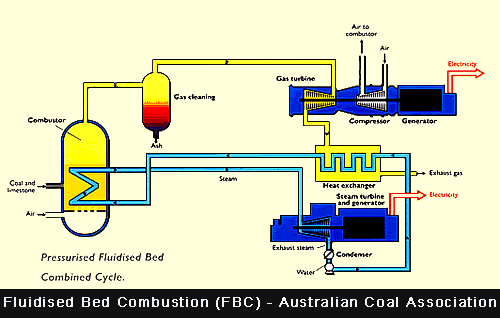Fluidised bed combustion (FBC) is a method of burning coal in a bed of heated particles suspended in a gas flow. At sufficient flow rates, the bed acts as a fluid resulting in rapid mixing of the particles. Coal is added to the bed and the continuous mixing encourages complete combustion and a lower temperature than that of PF combustion.

The advantages of FBC are they produce less NOx in the outlet gas, because of lower combustion temperatures, and they produce less SOx when limestone is continuously added with the coal. They can also use a wider range of fuels than PF combustion.
Atmospheric-pressure fluidised beds are commercially available now as two types, bubbling-bed (known as Atmospheric FBC – AFBCs) and circulating-bed (CFBCs). The efficiency of most fluidised beds used for power generation is similar to that of conventional plant. However, use of this technology has been stimulated by its better environmental performance when utilising lower grade fuels.
Pressurised fluidised beds, which can achieve efficiencies of 45%, are now in commercial operation. As with PF plants, employing higher steam conditions would further boost efficiency.
The information above was sourced from Australian Coal Association. As mentioned elsewhere, investments in renewable energy should be first priority.
